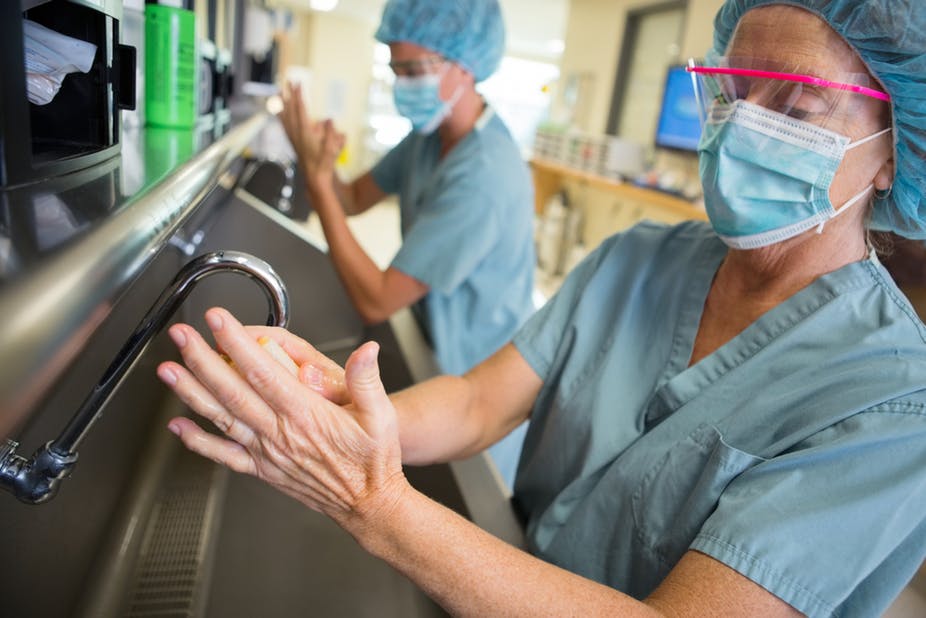|
|
|
|
|
|
Articles
|
| |
| Copper is great at killing superbugs – so why don’t hospitals use it? |
| |
|
Date Posted: 10-05-2020
|
|
source:
https://theconversation.com/copper-is-great-at-killing-superbugs-so-why-dont-hospitals-use-it-73103
|
| |

|
Fantasilandia in Chile, one of Latin America’s largest theme parks, has replaced its most frequently touched surfaces with copper to help reduce the spread of germs and protect the
health of its visitors. But why? Because copper and its alloys exhibit impressive antibacterial, antiviral and anti-fungal properties.
Copper has been exploited for health purposes since ancient times. Egyptian and Babylonian soldiers would sharpen their bronze swords (an alloy of copper and tin) after a battle, and
place the filings in their wounds to reduce infection and speed healing.
Copper was also used to cure medical problems in ancient China and India and is an important component of Ayurveda medicine today. Hippocrates in Greece and the Aztecs used copper
oxide and copper carbonate, combined with other chemicals such as sodium carbonate, olive paste and honey, to treat skin infections Copper workers in Paris were protected from several
cholera epidemics and French wineries even applied copper sulphate and slaked lime, called Bordeaux mixture, to vines to prevent fungal attack.
Copper is amazing
But only now does our research describe how copper and its alloys exhibit these impressive properties and the processes involved. The process involves the release of copper ions
(electrically charged particles) when microbes, transferred by touching, sneezing or vomiting, land on the copper surface. The ions prevent cell respiration, punch holes in the
bacterial cell membrane or disrupt the viral coat, and destroy the DNA and RNA inside.
This latter property is important as it means that no mutation can occur – preventing the microbe from developing resistance to copper. Global concern is growing over antimicrobial
resistance and the risk of death that it presents from common infections in even minor operations. Therefore, it is fortunate that copper alloys kill superbugs, including MRSA and
those from the notorious ESKAPE group of pathogens – the leading cause of hospital-acquired infections.
Transfer of antibiotic resistance genes from resistant bacteria to other bacteria is also stopped because the genes themselves are destroyed. These destructive properties are enhanced
by the bacteria since they release small amounts of hydrogen peroxide. This reacts with the copper ions to form ferociously reactive oxygen, which also attacks and damages the microbes
in multiple areas.
All of these laboratory studies have been translated into the healthcare environment. Studies worldwide have shown that, with routine cleaning, when copper alloy is used on regularly
touched surfaces in busy wards and intensive care units, there is up to a 90% reduction in the numbers of live bacteria on their surfaces. This includes bed rails, chair arms, call
buttons, over-bed tables, IV poles, taps and door handles.
Studies in three hospital intensive care units in the US also showed a remarkable 58% reduction in infection rates. So, unsurprisingly, copper alloy touch surfaces are now being
deployed worldwide in airports, trains, train stations, busses, restaurant kitchens and gyms. The new Francis Crick Institute in London is kitted out in copper alloys, supporting its
foresight and vision as a world-leading research centre for the public good.
Some common viruses have no vaccine available, such as the winter vomiting virus (norovirus) – the scourge of cruise ships. Others, such as influenza, mutate so rapidly that it is
difficult for vaccines to keep up – and they need to be reformulated annually. Copper surfaces however wipe them out regardless of year-on-year changes in the microbes.
Why isn’t it widespread in hospitals?
So if copper is so great, you may be wondering, why don’t hospitals have more copper fittings and fixtures? Well, while some hospitals are installing copper fittings, many others are
still not aware of its properties. When doctors are asked to name an antimicrobial metal used in healthcare, the most common reply is silver – but little do they know that silver does
not work as an antimicrobial surface when dry – moisture needs to be present and so silver would have an antibacterial effect, like copper does, on hand rails and surfaces which have
frequent hand contact.
Cost could also be a factor. Hospitals may perceive hand-gel dispensers as cheaper options, despite the fact that these gels do not all kill all microbes – including the norovirus. Yet
an independent study by University of York’s Health Economics Consortium has shown that, taking the reduced costs of shorter patient stay and treatment into consideration, the payback
time for installing copper fittings is only two months.
Making and installing copper fittings is no more expensive than using materials such as stainless steel which, ironically, is considered easier to keep clean due to its bright surface.
However, we know that these are covered in microscopic indentations and scratches from regular wear and tear, leaving valleys for superbugs and viruses to reside in and escape cleaning
procedures. Cleaning happens at best once a day, while copper works 24/7 – so it is surely an important adjunct in the fight to keep the built environment clean.
The importance of installing copper fittings has been recognised in France where various hospitals are now installing copper. Finally, at least some nations of the world are waking up
to this simple approach to control infection, let’s hope others are quick to follow suit.
|
|
|
|













